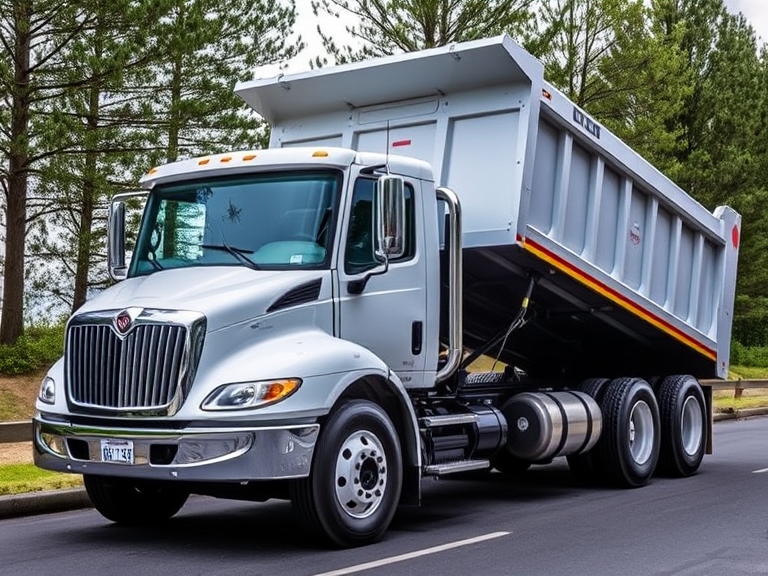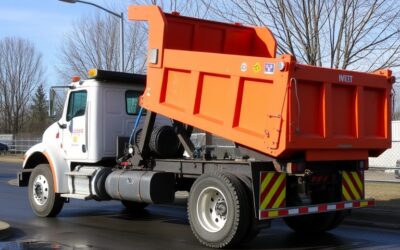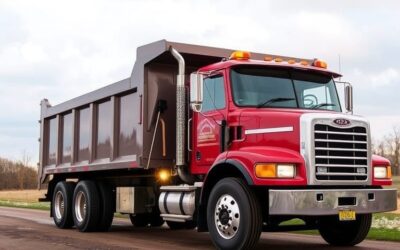Safety is essential when operating dump trucks, especially with the risk of tip-overs. The WINK Anti-Tip system offers a reliable solution, helping drivers maintain control and prevent costly accidents. These heavy-duty vehicles are essential for construction, mining, and other industrial tasks, but they come with inherent risks—one of the most serious being tip-overs. A dump truck tip-over can lead to severe damage to the truck, loss of the load, and most importantly, pose significant dangers to the driver and nearby workers.
Addressing this critical issue, the WINK Anti-Tip device offers a technological solution designed specifically to prevent dump truck tip-overs. This device continuously monitors the truck’s stability, providing real-time adjustments and alerts to ensure safe operations. By understanding how tip-overs occur and how the WINK Anti-Tip device works to prevent them, we can significantly enhance safety and efficiency in dump truck operations.
In this article, I will delve deeper into the mechanics behind dump truck tip-overs and explain how the WINK Anti-Tip technology works. We will also explore the benefits of using this device for different types of dump trucks and provide a step-by-step guide to properly implement it on your vehicle. Understanding these aspects can help you make informed decisions and prioritize safety in your daily operations.
The Mechanics Behind Dump Truck Tip-Overs
To prevent dump truck tip-overs, it’s crucial to understand the causes. Uneven loads and high centers of gravity can make dump trucks unstable, especially on rough terrain. One primary cause is uneven weight distribution. When the load inside the truck is unevenly distributed, it can cause the truck to become unstable. As the center of gravity shifts, particularly during lifting or dumping processes, the risk of tipping increases. This is especially problematic when operating on sloped or uneven terrain, where gravitational forces can further compromise stability.
Another contributing factor is the height of the load. As the truck’s bed rises to dump its cargo, the center of gravity also rises. If the load is too high or unevenly balanced, the truck becomes top-heavy, which can lead to a tip-over. Drivers must be aware of these dynamics and take necessary precautions, such as adjusting speed and ensuring even load distribution, to mitigate the risks.
How WINK Anti-Tip Technology Works
WINK Anti-Tip technology actively prevents tip-overs with advanced sensors that monitor your truck’s balance and load in real time. The device uses advanced sensors to monitor the angle and balance of the truck in real-time. These sensors constantly gather data about the truck’s position, load distribution, and the angle of the lifting bed. When the system detects a potential tip-over situation, it sends immediate alerts to the driver, urging corrective action.
One standout feature of the WINK Anti-Tip device is its automatic lowering mechanism. In scenarios where the truck’s angle exceeds safe limits, the device can autonomously lower the truck bed to stabilize the vehicle. This automatic intervention is crucial in preventing accidents, as it removes the element of human error from the equation. Additionally, the device’s alert system ensures that drivers remain aware of the truck’s stability status, enabling them to make informed decisions on the fly.
By incorporating these advanced features, the WINK Anti-Tip technology significantly reduces the risk of dump truck tip-overs, enhancing overall safety and efficiency.
Steps to Properly Implement WINK Anti-Tip on Your Dump Truck
Ready to add WINK Anti-Tip to your dump truck? Here’s a simple guide to installing it for maximum safety: First, select the appropriate model based on your truck type, whether it’s a frameless dump truck, roll-off dump truck, or frame-type dump truck. Next, ensure that all necessary components, including the control unit, sensors, and hydraulic system, are included in your kit.
Begin the installation process by mounting the control unit in a secure location within the truck’s cabin. This unit should be easily accessible for monitoring purposes. Then, install the sensors at strategic points around the truck to ensure comprehensive monitoring of tilt angles and load distribution. Ensure that all wiring is properly connected and secured to prevent any interference during operation.
After installing the components, calibrate the system to ensure the sensors provide accurate readings. Perform a series of test runs to verify that the device responds correctly to simulated tip-over scenarios. This step is vital to confirm that the WINK Anti-Tip device functions as intended and adds the necessary safety margin to your operations.
Conclusion
WINK Anti-Tip technology is a game-changer for dump truck safety, with real-time monitoring and automatic adjustments that reduce tip-over risks. Keep your truck stable, your driver safe, and your operations smooth with WINK Anti-Tip. Understanding its components and performing routine checks can prevent unexpected failures and extend the lifespan of the device. By addressing common issues and following best practices, you can ensure that your WINK Anti-Tip device operates at its peak performance.
Efficient and effective maintenance not only enhances the functionality of your WINK Anti-Tip device but also contributes to a safer working environment for your dump truck operations. Properly implementing this technology can help you mitigate the risk of tip-overs and improve overall operational efficiency.
If you’re ready to enhance dump truck safety, contact us today to explore how our WINK Anti-Tip device can make a significant difference in your operations. Stay safe and efficient on the road with WINK Anti-Tip!





